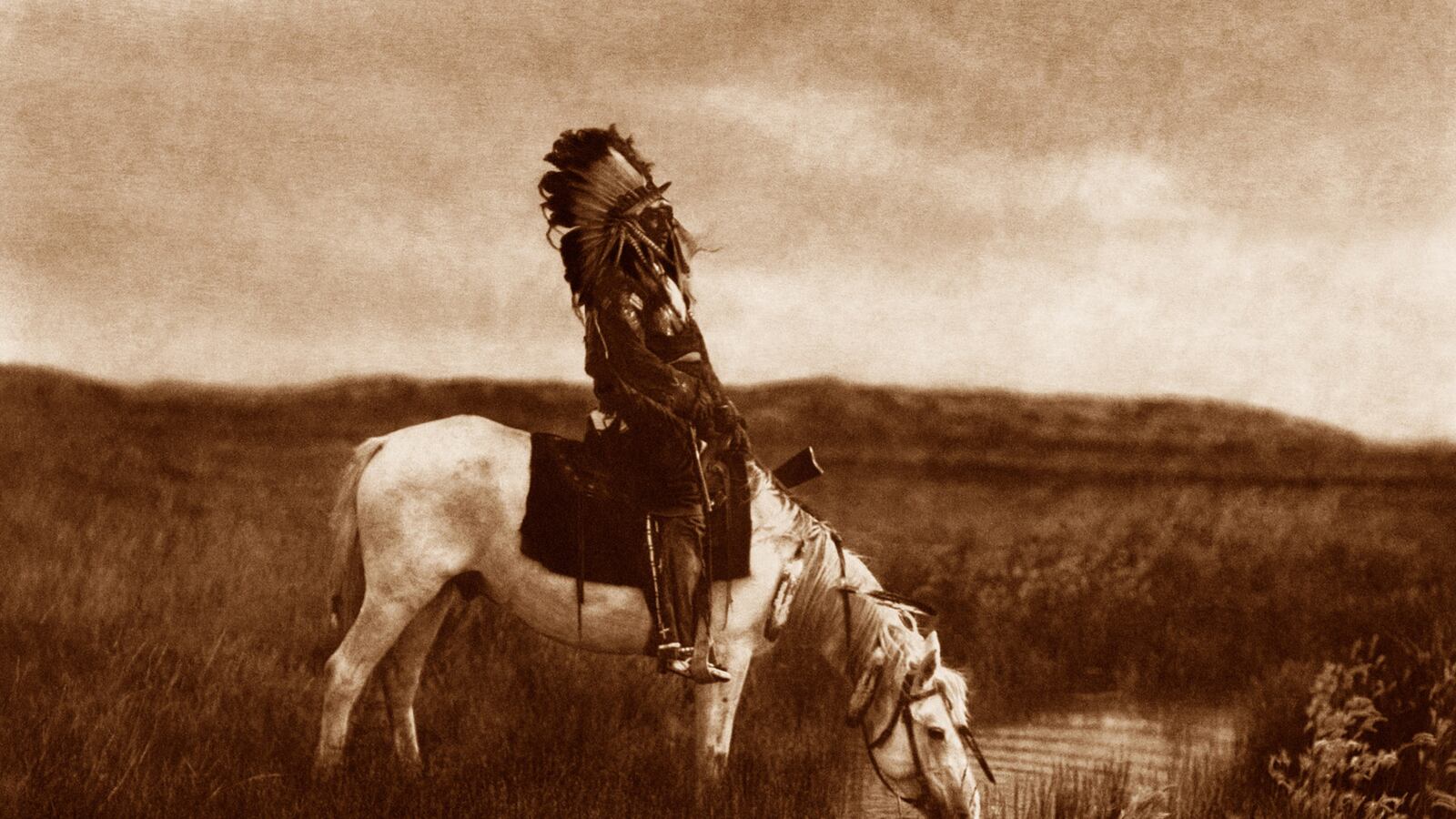The story of the American Revolution has been so often told that it’s sometimes hard to believe there’s anything new left to say.
Even those traditionally left out—women, Native and African Americans, the poor—have seen their lives folded into the revolution’s history in recent decades. But in Independence Lost: Lives on the Edge of the American Revolution, the historian Kathleen DuVal reminds us that all we have to do is expand the aperture a bit, to bring into focus the people living along the southeastern edges of the rebellious colonies, and an entirely new picture takes shape.
The mix of Indian nations, African slaves, and French, Spanish, and British colonists living in what is today Florida, Alabama, Mississippi, and Louisiana all played a critical role in the war, and yet, as the title of her book makes clear, independence for the 13 colonies was, for most these people, “independence lost.”
It’s easy to forget that the American Revolution was hardly fought within the 13 colonies alone. It was truly a global war. By 1779, France and Spain had entered the war, allying with the rebels, in the hope that they could regain territory they had lost a little more than a decade earlier in the Seven Years’ War. In that conflict, the British took much of France’s and Spain’s colonial lands.
In the southeast corner of North America, Spain had the most to gain if the patriots won with their aid: they could take back all of Florida, and perhaps even part of Britain’s nearby Caribbean colonies. Yet standing in the way were two highly unpredictable groups: Native Americans and slaves. One of the great achievements of DuVal’s book is to show just how dependent the war’s outcome was on them both.
The story of Payamataha, the leader of the Chickasaw nation, provides a lucid illustration. Because Payamataha had allied with the British in the previous war, the British simply assumed he would do so again when the war of independence erupted. But after decades of fighting, Payamataha wanted peace. As a result of trade and treaties he helped secure in the 1760s, the Chickasaw population had finally begun to grow. For Payamataha, it was only logical to stay neutral. And yet the British were shocked when, in 1777, he refused to rally Chickasaws to defend Natchez, then a part of British West Florida, from a patriot invasion. Though short-lived, the patriots’ seizure of Natchez was an early warning to the British: if they didn’t work to gain allies in the southeast—Natives, Africans, even their own colonists who chose not to rebel—they might lose all their American colonies together.
The British found more success with the Creeks, who lived along the border of present-day Alabama and Georgia. Led by Alexander McGillivray, the son of a Creek mother and Scottish father, the Creeks saw a British alliance as their best option. Ever since the Seven Years’ War ended in 1763, Georgian settlers had been trying with limited success to push westward into Indian territory, with only British authorities working to restrain them. Indeed, Native American nations all along the Mississippi River believed a British victory would prevent any further expansion. McGillivray had personal reasons for siding with the British, too: Patriots had seized his family’s Georgia plantation because of their tepid support for independence; joining the British was payback.
For most of the region’s slaves, the question of whether to join the patriots, the loyalists, or stay neutral had no simple answer. And the answer changed dramatically as the war went on. Early on, fighting for British may have seemed the best choice: in 1775, the royal governor of Virginia, Lord Dunmore, made the surprising move of offering freedom to any slave who fled a patriot-owned plantation and fought for the British. But DuVal reminds us that, for slaves, individual freedom carried tremendous trade-offs, particularly the loss of one’s family. Even after the British military extended Dunmore’s offer to Georgia’s slaves in 1778, the same drawbacks remained: only men of a certain age could fight—but what would happen to their families? And what if the British lost?
In the southeast, Spain’s system of slavery further complicated slaves’ options. Under slave law in Spanish Louisiana and the pre-British Floridas, slaves could sue their owner if they violated Spain’s relatively more protective slave laws; they could also fix a price to buy their own freedom. Nor was the British offer of freedom for service novel—Spain had been doing the same for decades. As a result, when Spain formally entered the war on the patriots’ side, it was anyone’s guess what slaves would do.
To illustrate some of the decisions slaves made, DuVal has done a remarkable job finding stories like the one of Petit Jean, whose work for Spanish forces was critical to the patriots’ success. Jean had lived as a slave in Mobile, part of West Florida, long before the British took it from Spain in 1763. His knowledge of the British and Spanish slave systems may have made him less quick to jump on the British offer of freedom for service. Instead, when the Spanish seized Mobile in 1780, he began acting as a courier for Spanish troops. Like other slaves in the region, he may have used the rival British offer of freedom as leverage against the Spanish. Jean not only got Spanish authorities to guarantee his freedom in 1782, but also the promise that he could buy his wife’s freedom, too.
When the Spanish seized Pensacola, the capital of West Florida, in 1781, slaves like Jean played an important role, either as military aides or as labor used to pave military roads. In fact, one of DuVal’s more provocative claims is that the Spanish seizure of Pensacola should stand on par with the much better known patriot victory at Yorktown, Virginia, the same year. We remember Yorktown as the last major patriot victory that forced Britain to the negotiating table, but DuVal argues convincingly that Pensacola should share that honor. Britain’s surrender of Pensacola meant that they had actually lost a colony—West Florida—that had not even been in rebellion. When combined with Yorktown, the British realized they might as well “cut their losses and recognize American independence.”
Yet rather than celebrate the patriots’ victory, DuVal underscores the tragedy. Even before the ink was dry on the Treaty of Paris that ended the war in 1783, tensions between the Spanish and the newly independent states emerged. Benjamin Franklin, acting as an American diplomat, helped negotiate a secret deal with Britain concerning West Florida’s borders, cutting the Spanish out. For the next few decades, Spanish and American troops would engage in endless small-scale battles over those precise boundaries.
The United States took the same go-it-alone strategy in their negotiations with Indian nations, whether wartime allies or not. They simply handed them treaties that ceded thousands of acres, even when some of the Native American signatories had no diplomatic standing. When McGillivray told Americans that the Treaty of Augusta that Americans forced two Natives to sign lacked legitimacy, and after settlers began to occupy Creek lands nonetheless, McGillivray declared war. What’s more, he got the Spanish to secretly funnel him arms, and then attacked the Chickasaws, led by the peacenik Payamataha, forcing them to take the Creeks’ side.
McGillivray’s war ended in a draw in 1787, largely because Spain shut off their arms supply. For a time, the Spanish believed they could use Native nations as proxy soldiers whenever they pleased. But ultimately both Natives and Spanish stood to lose. America’s westward expansion was relentless; by 1803, Spain lost all of Louisiana, and two decades later, Florida. The Creeks lost yet another war against Andrew Jackson’s troops in 1814, and soon all Natives in the region were forcibly removed when Jackson became president.
DuVal’s larger argument is that America’s war for independence ultimately created an entirely new kind of power dynamic in the region. Gone were the days when empires—British, French, Spanish, and Native American—worked in tandem, establishing mutually dependent alliances that, if always tense and uncertain, were still more stable than what the new American nation had in store. America’s founding generation believed they could create a new kind of empire, in Jefferson’s famous words, an “empire of liberty,” that could cut itself loose from the old dependencies on Native and European nations alike.
Not all the groups DuVal considers fit neatly into this schema. She suggests, for instance, that slaves ultimately had more independence within the slave systems of British and Spanish colonial rule than under the system that developed in the United States. Perhaps. But we should not forget that all the northern states enacted gradual emancipation laws during or shortly after the revolution; Congress forbade the entry of any new slaves in the northwest territory; and in 1782, even Virginia made it far easier for owners to free their slaves, with laws comparable to those in Spanish colonies. The revolution also inspired Haitian slaves to enact their own revolution, creating the first free Black republic in the western hemisphere. Indeed, even as slavery grew more entrenched in the southern United States, almost everywhere else—except in Spanish-ruled Cuba, and Brazil—Blacks were winning their freedom.
Yet none of this detracts from what is ultimately a remarkable, necessary—and entirely new—book about the American Revolution. DuVal’s history reminds us that if we celebrate a more inclusive vision of the United States this Fourth of July, it is not the one the founding generation had in mind.






